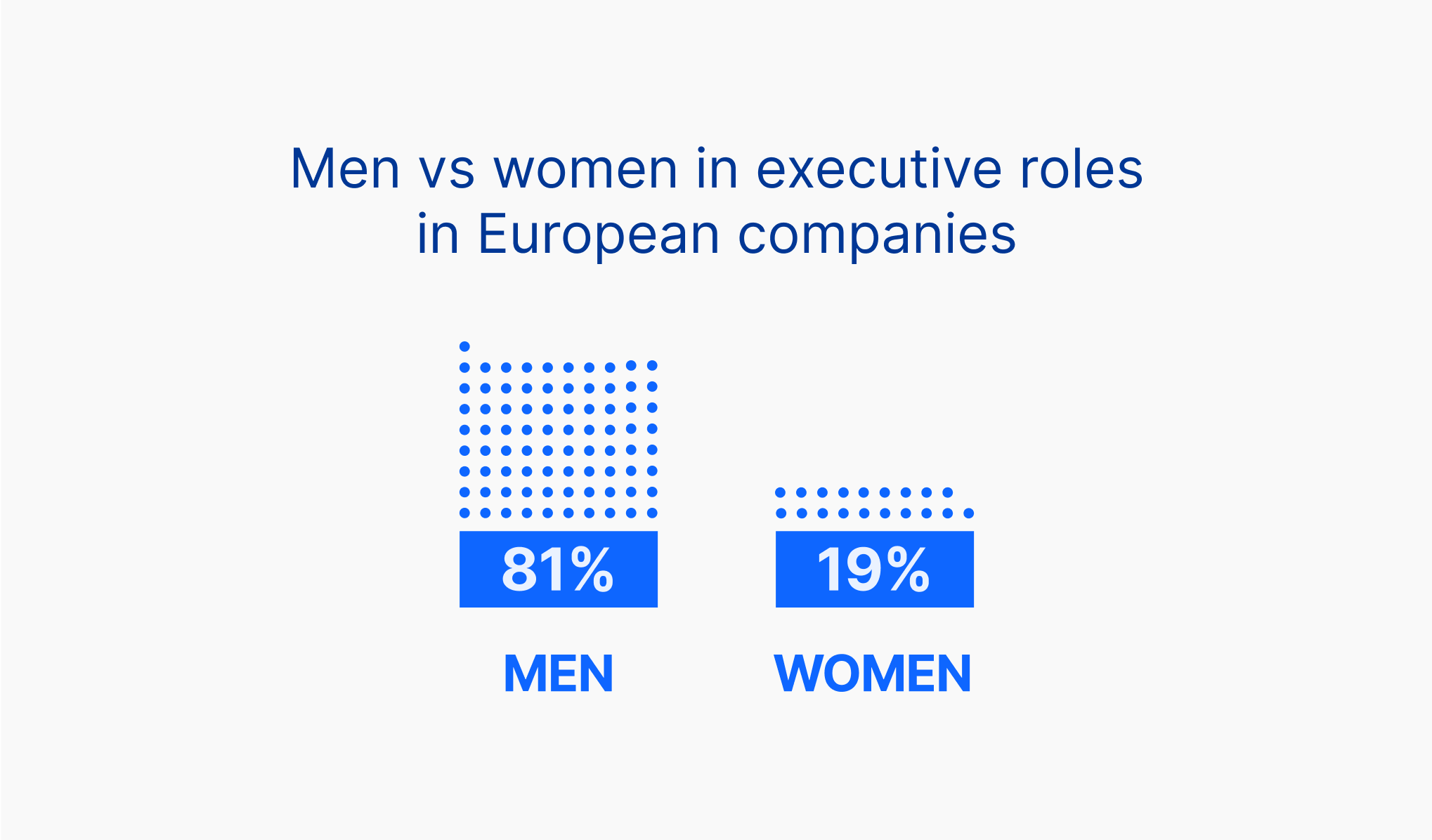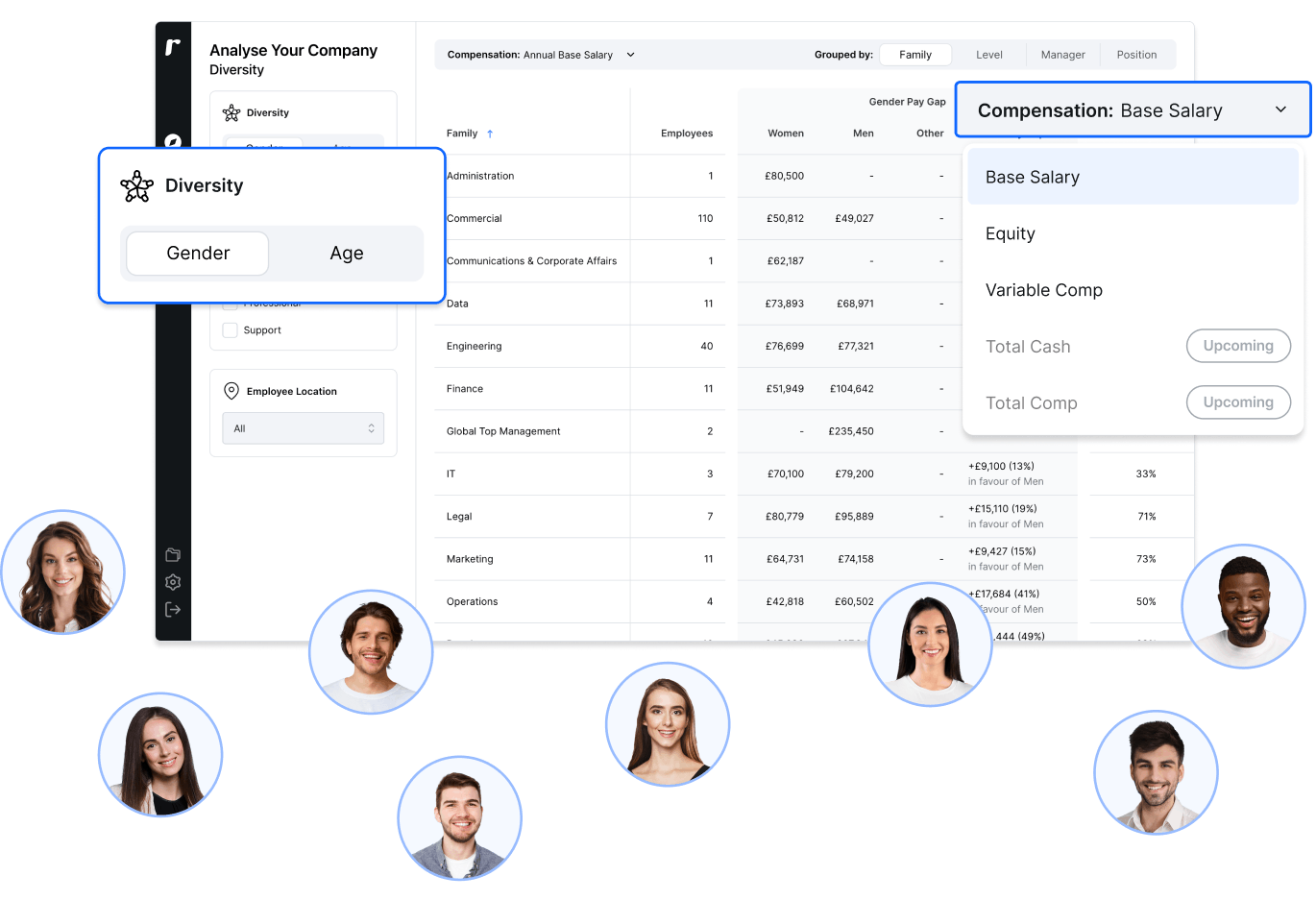Why is understanding your company’s gender pay gap important?
Well, systemic differences in pay between men and women contribute to overall gender inequality.
Which means companies have a key role to play in eliminating gender inequality in society as a whole, through addressing bias and discrimination in compensation.
That’s the big picture view.
On top of that, there’s also:
- Complying with legislation: gender pay gap reporting is already required in some countries and further legislation on this is incoming – the big one being the EU Pay Transparency Directive).
- Employee attraction and retention: compensation is key to winning or losing in today’s talent ecosystem – a McKinsey study found it to be the no.1 driver of employee retention and the no.2 driver of employee attrition.
- Business performance: gender diverse teams have been found again and again to make better decisions, leading to better business results – a McKinsey study found companies in the top quartile for gender diversity were 15% more likely to have above average financial returns.
So, all in all, the gender pay gap is a pretty important compensation metric.
But how should you go about calculating it?
💡 A note on gender before we get stuck in
It’s worth mentioning that, as it stands, gender pay gap calculations and reporting primarily focus on binary gender i.e. the gender pay gap between employees that identify as men and those that identify as women.
This means calculations don’t account for other gender identities such as non-binary or trans employees – which leaves a gap in the data.
There is increasing scrutiny on additional areas of pay equity (including other gender identities, as well as areas such as the ethnicity pay gap), from both legislators and campaigning organisations, so we should expect to see more updates on this coming soon.
Subscribe to our newsletter for a monthly treasure trove of insights from Ravio's compensation dataset and network of Rewards experts, to help you navigate a career in compensation 📩
How to calculate the gender pay gap
The gender pay gap is a measure of the difference between typical earnings for men and women, given as a percentage.
It can be calculated as a median gender pay gap, with the calculation:

Or a mean gender pay gap with the calculation:

At Ravio, we use the median gender pay gap as standard within our compensation benchmarking platform, because the median is less prone to outliers.
However, legislative reporting typically requires both the mean and median gender pay gap to be calculated (e.g. UK gender pay gap reporting, EU Pay Transparency Directive).
Unadjusted vs adjusted gender pay gap
As well as the median and mean, there is a second distinction in how the gender pay gap is calculated: unadjusted and adjusted.
What’s the difference between the unadjusted and adjusted gender pay gap?
The unadjusted gender pay gap gives a view of the raw difference in pay between all men and women – this is the figure given by the calculations shown above.
The adjusted gender pay gap takes into account other systemic factors which contribute to pay differences between men and women who do equal work – such as job role and responsibilities, education level, work experience – by ‘adjusting’ the raw data to account for these things, typically by running a regression analysis on the unadjusted pay gap data to understand how one variable relates to another.
Because there are so many factors which impact pay discrimination towards women, the adjusted gender pay gap can be a more valuable metric to help companies identify where pay discrepancies are coming from, and so what actions should be taken to rectify this.
What about the representation of women in different roles?
Calculating the gender pay gap doesn’t tell us everything we need to know – as we’ve seen with the adjusted vs unadjusted gender pay gap calculations.
Which is why the representation of women across roles and levels is a crucial metric to monitor alongside the gender pay gap.
Let’s take a look at employees at the executive level, for instance – roles like Chief Executive Officer (CEO), Chief Operating Officer (COO), Chief Marketing Officer (CMO), and so on.
Ravio’s data shows that only 19% of executive level employees in European companies are women, compared to 81% of these roles which are held by men.

Data from Ravio, correct as of September 2023
That’s very low – there simply aren’t many women in leadership roles.
But, if we looked only at the gender pay gap in executive roles we’d see that it’s actually 0% at this level – which is why representation is such an important additional piece to monitor and address when looking at improving gender diversity in your company.




